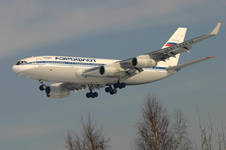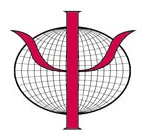Zwei russische Studenten auf Deutschlandtour
32. Tag
In der letzten Zeit sind die östlichen Heilmethoden in der ganzen Welt sehr verbreitet. Diese werden für die Behandlung von unterschiedlichsten Krankheiten genutzt. Zu diesen Methoden gehört auch das „Shiatsu“ – die japanische Druckmassage, die von Ohashi in einer besonderen Weise in der Mitte des 20. Jahrhunderts entwickelt wurde und bald die Zustimmung in vielen Ländern bekam.
Heute lernten wir diese Methode kennen. Hans-Werner erzählte uns über die Besonderheiten von Shiatsu, und zusätzliche Informationen konnten wir durch Lehr-Filme bekommen, in denen gezeigt wurde, wie diese Druckmassage durchgeführt wird.
Die traditionelle chinesische Medizin stellt die Grundlagen des Shiatsu dar. Erst ein tieferes Verständnis der asiatischen Vorstellungen und Denkweisen ermöglicht eine sinnvolle Anwendung der Shiatsu-Massage.
Das von Ohashi praktizierte Verfahren eröffnet den Zugang zu manuellen Heilweisen der östlichen Ländern und kombiniert die in Japan entwickelte Verbindung zwischen westlicher Massage und der Jahrtausende alten Akupunktur.

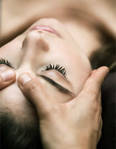
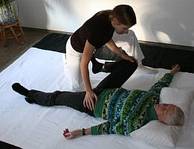
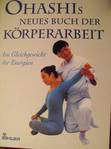
33. Tag
Heute besuchten wir Aachen. Diese Stadt liegt an der Grenze zu den Niederlanden und zu Belgien.
Ehrlich gesagt, hat Aachen sehr große Unterschiede im Vergleich zu den anderen Städten – es ist eine internationale Stadt, und man kann dort Menschen verschiedener Nationalitäten begegnen. Ein Grund hierfür ist auch die Tatsache, dass Aachen eine Universitätsstadt ist. Die Studenten aus der ganzen Welt kommen hierher, um zu studieren. In Aachen befindet sich eine der größten und traditionsreichsten technischen Hochschulen Europas.
Wir haben einen Spazieregang durch das Stadtzentrum gemacht und wurden vom Aachener Dom überrascht. Es ist Aachens Wahrzeichen, welches im Jahre 1978 als erstes deutsches Kulturdenkmal und zweites Kulturdenkmal weltweit in die Welterbeliste der UNESCO aufgenommen wurde. Im Aachener Dom befinden sich neben dem Grab Karls des Großen für die Katholische Kirche vier bedeutende Reliquien: das Kleid Mariens, die Windel Jesu, das Enthauptungstuch Johannes des Täufers und das Lendentuch Christi. Seit mehr als 1200 Jahren haben Gläubige und Pilger aus der ganzen Welt den Weg nach Aachen und in den Aachener Dom gefunden, haben dort ihre Liturgie gefeiert, waren zu Gottesdiensten, Gebet und geistlicher Musik eingeladen.
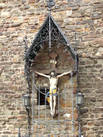
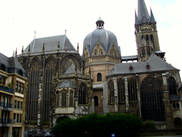

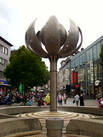
34. Tag
Die beste Möglichkeit die Geschichte eines Landes kennenzulernen ist es, sich in die alten Zeiten zu vertiefen und alle Ereignisse selbst zu fühlen. Heute hatten wir eine solche Möglichkeit während des Besuchs des Freilichtsmuseums Kommern in der Eifel. Dieses Museum besitzt ein großes Gelände, auf dem verschiedene alte Häuser aus den umgebenen Landschaften original aufgebaut sind. Die Besucher können anschaulich erleben, wie das Leben und die Führung der Haushalte, z.B. vor 300 Jahren ausgesehen hat.
Das Freilichtsmuseum besitzt eine Ausstellung, die uns am meisten beeindruckte. In einem großen Gebäude ist eine kleine alte deutsche Stadt gebaut. Jede Straße spiegelt einen bestimmten Zeitraum der deutschen Geschichte wieder: Auf einer Straße beobachteten wir das Leben des deutschen Adels, auf der anderen – die Kriegsereignisse. Auf diesen Straßen stehen Wachsfiguren, welche die typischen Bewohner dieser Stadt zu der bestimmten Zeit darstellen. Diese sind so meisterhaft angefertigt, dass man sie für lebende Menschen halten kann.
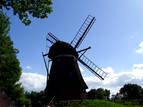
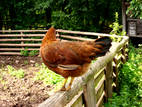

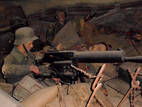
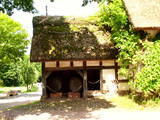

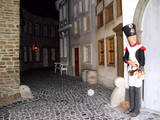

35. Tag
Deutschland hat weltweit eine wichtige ökonomische Bedeutung. In fast jeder Stadt gibt es große Einkaufszentren für Bewohner und Touristen.
Heute besuchten wir das „Centro“ in Oberhausen und einige große Geschäfte im Zentrum von Duisburg. Es gibt sehr unterschiedliche Geschäfte dort. Wir besuchten diese Geschäfte und machten Einkäufe.
Das Angebot ist reichhaltig: Lebensmittel, Kleidung, Spielzeuge, Souveniers, Kosmetik und vieles andere. Viele weltbekannten Designfirmen bieten ihre Produkte an. In vielen Einkaufszentren findet man Geschäfte von Mexx, Zero, Zara, S. Oliver, Mango.
Auch unterschiedliche Freizeitgestaltungen sind dort möglich: Spielplätze für Kinder, Restaurants, Cafes, Schönheits- und Massagesalons.
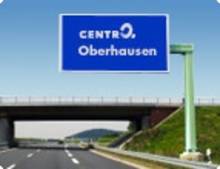
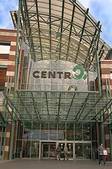
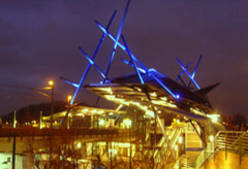
36. Tag
Der heutige Tag wurde dem leksikalischem Sprachtraining und der Arbeit am KTMS gewidmet. Am Morgen hatten wir eine Liste der neuen Wörtern bekommen, zu welcher wir viele Übungen machten.
Bei der Arbeit am KTMS handelte es sich um die Subtests „Quantitative und formale Probleme“ und „Schlauchfiguren“. Zur Zeit ist der Test fast fertig.
Am Abend sahen wir das Konzert von dem bekannten jungen deutschen Violinist David Garret fern, der die Werke sowohl von den Klassikern, als auch von den modernen Musiker spielt. Am meisten überraschte uns die Komposition „In der Höhle des Bergkönigs“, die in seiner Darstellung sehr ungewöhnlich und interessant gespielt wurde.
Um das Spiel zu hören - anklicken
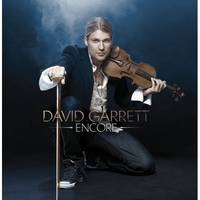
37. Tag
Heute haben wir Köln besucht. Das ist eine von den bekanntesten und größten Städten in Deutschland. Diese Stadt ist für ihre 2000-jährige Geschichte und ihr kulturelles Erbe, sowie für ihre international bedeutenden Veranstaltungen bekannt.
In Köln haben wir das Wahrzeichen von dieser Stadt – Kölner Dom – besucht, welcher mit 157,38 Metern Höhe unglaublich schön und mächtig aussieht.
Der Kölner Dom ist eine katholische Kirche und steht unter dem Patronat des Heiligen Petrus. Innerhalb dieses Doms befinden sich viele Reliquien, z.B. die Knochen von drei Königen. In diesem Ort finden Gottesdiensten, Konzerten geistlicher Musik und Orgelfeierstunden statt.
Zum Kölner Dom gehört auch die Domschatzkammer, die sich an der Nordseite der Kathedrale befindet. Diese haben wir heute auch besucht. Die Domschatzkammer besteht aus sechs Räumen auf drei Etagen, wo verschiedene Kostbarkeiten des Doms ausgestellt sind.

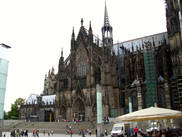
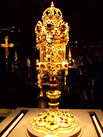
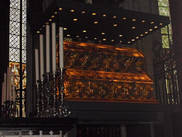
38. Tag
Heute fand ein Seminar in der Systemischen Familientherapie statt, an dem wir teilnehmen konnten. Das Thema dieses Seminars lautete: „Die Methoden der Anamneseerhebung und des Familienbretts in der Systemischen Familientherapie“.
Zusammen mit einer Gruppen der Psychologen, die ihre Ausbildung zur Zeit im PIB machen, arbeiteten wir mit einem realen psychotherapeutischen Fall. Wir waren bei einer Beratung anwesend, die zwei Stunden dauerte. Während dieser Beratung wurde vom Klienten die sogenannte Anamnese erhoben, und danach wurden Familienkonstellationen auf einem Familienbrett modelliert. Nach der Beratung begann unsere Gruppe die Therapieplanung zusammenstellen, verschiedene Hypothesen zu formulieren, die dann während der Gruppenbesprechung diskutiert wurden.
Die Bilanz der Arbeit wurde in einem Chinesischen Restaurant gezogen, wo wir ein schönes Abendessen hatten.
So stellte der erste Tag des Seminars eine bedeutsame Erfahrung für uns dar.
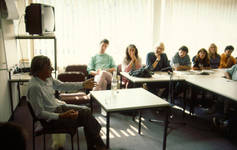
39. Tag
Heute hatten wir die Fortsetzung des Seminars „Die Methoden der Anamneseerhebung und des Familienbretts in der Systemischen Familientherapie“. Es wurden die Hypothesen besprochen und der therapeutische Plan für diesen Klient bearbeitet. Danach lernten wir die Methode des Familienbretts in der Arbeit benutzen, und wir hatten sogar die Möglichkeit, die persönliche Situation auf dem Familienbrett darzustellen.
Das Familienbrett wurde in der systemischen Familientherapie entwickelt und findet in unterschiedlicher Ausgestaltung Anwendung.
Mit Hilfe der in Form, Größe und Farbe unterschiedlichen Figuren werden auf dem Brett die Familienmitglieder und ihre Beziehung zueinander dargestellt. Es wird möglich, sich die Familie und die Beziehungen untereinander aus verschiedenen Perspektiven und „von oben“ anzusehen. Durch Drehen des Brettes ergeben sich wiederum neue Sichtweisen.
Am Ende des Seminars wurde uns ein Zertifikat überreicht.
Am Abend hatte Evgeny die lexikalische Prüfung im Deutschen, die er erfolgreich bestand. Die Ergebnisse dieser Prüfung wurden in einem Protokoll festgehalten.
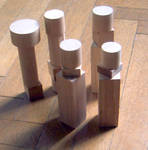
40. Tag
Im Laufe vom heutigen Tag beschäftigten wir uns mit KTMS: der ganze Test wurde noch einmal kontrolliert, korrigiert und in die Druckerei zum Drucken gegeben.
Weil der heutige Tag der letzte Tag in Deutschland war, bereiteten wir uns zur Abreise. Morgen fliegen wir mit einem Frühflug nach Russland. Während dieser Reise bekamen wir unauslöschbare Eindrücke! Wir besuchten sehr viele Museen, lernten deutsche Kultur kennen und bekamen wichtige Kenntnisse und Erfahrung im Bereich der Psychologie. Außerdem hatten wir die Möglichkeit, während des Aufenthalts in Deutschland Deutsch und Englisch zu trainieren.
Wir sind Hans-Werner Gessmann und dem PIB-Zentrum für die Möglichkeit Deutschland zu besuchen sehr dankbar.
